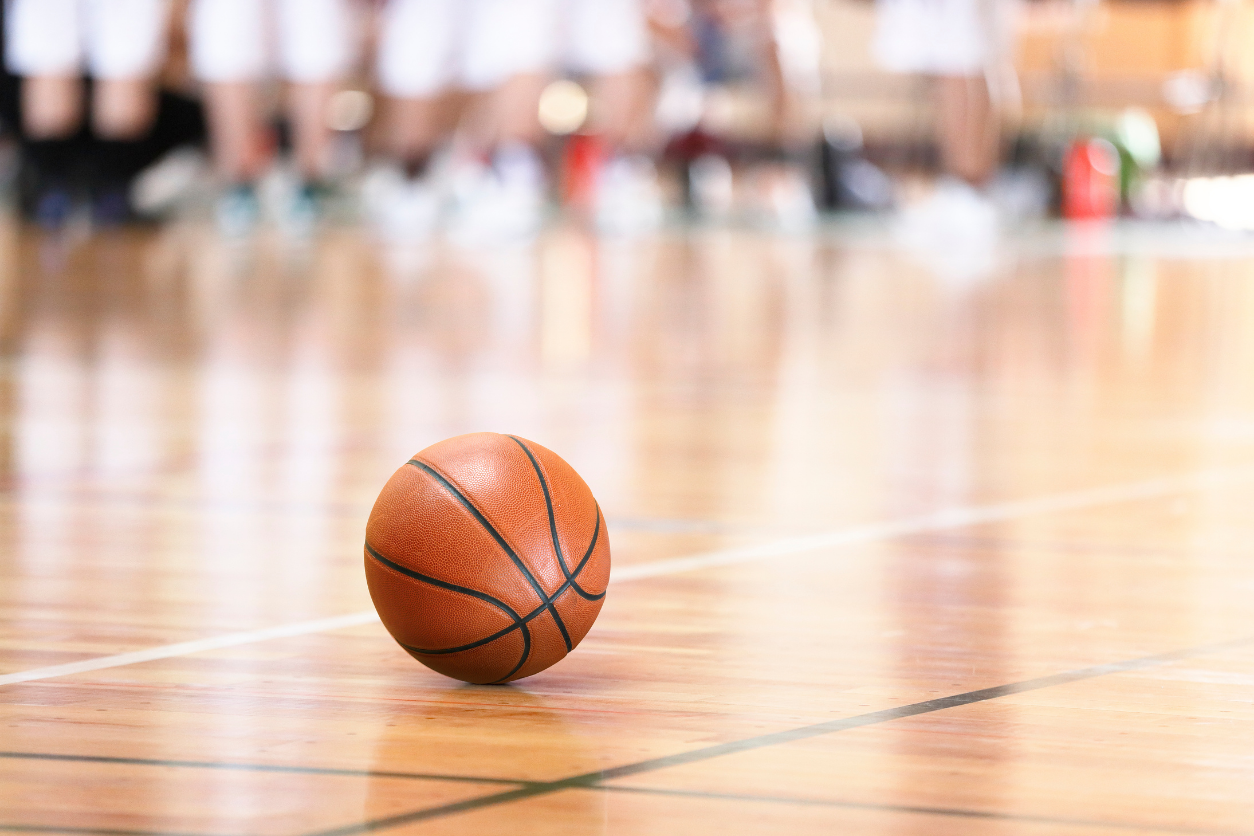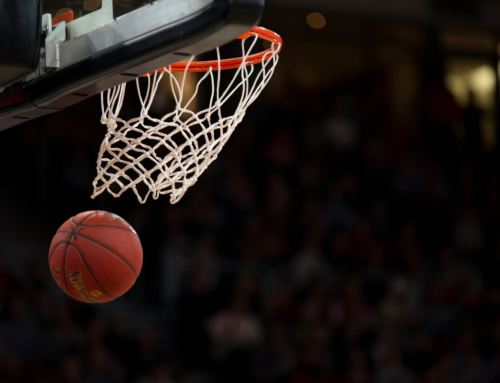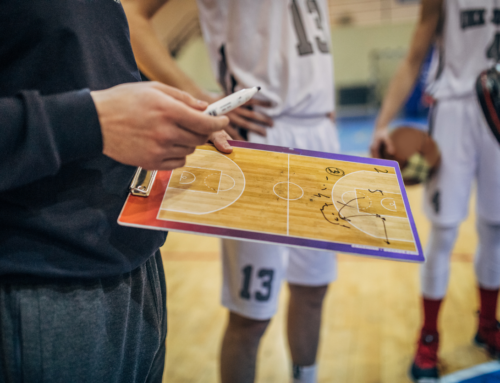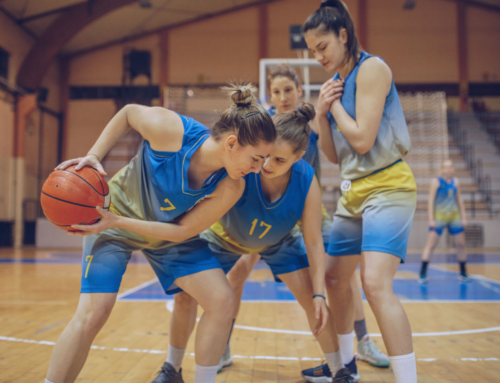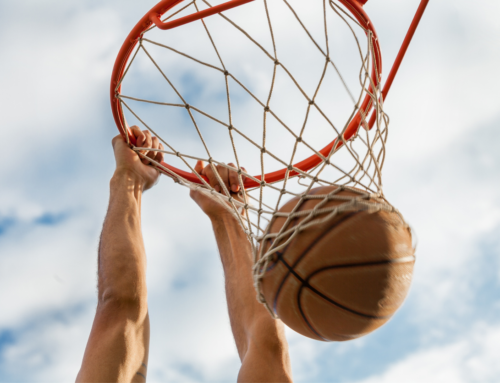You don’t always have to stand tall to stand out.
Men’s college basketball recruiting can be frustrating and confusing. So, before you start the ball rolling on your own recruiting, take a few minutes to familiarize yourself with these five important things you need to know.
What Coaches Look For
On average, a Division I college basketball player is slightly less than 6’5”, while collectively, the most common height is 6’7”. But, in addition to height, college coaches also look for a solid body build, athleticism, and strength. Put it all together, and at the DI level, coaches look for power players who can make a difference on the floor.
But beyond physical dimensions, coaches also like to see solid fundamentals and technical skills, as well as a healthy basketball IQ. Essentially, college coaches don’t have time to teach fundamentals such as ball protection, footwork, and shot technique. And, while one’s basketball IQ can be expanded, at the college level, most coaches expect recruits to have a solid grasp of on-floor situational awareness, such as the ability to read defenses, ability to control the game and pace, or simply being able to read the game and being able to execute accordingly.
Finally, remember that good grades do matter to college coaches. You need to meet minimum core requirements to qualify academically with the NCAA and, beyond that, good grades and solid entrance exam scores demonstrate your discipline, leadership, and that you can handle college classes. And, if your grades are high enough, you may also qualify for academic scholarships. That’s important because…
Not All Scholarships Are Created Equal
In NCAA Division I, men’s basketball is a headcount sport and, as such, each team is allowed 13 full-ride scholarships per team. For every other division, basketball is an equivalency sport, which means full-ride scholarships are rare and, in most cases, coaches divide their scholarship budget among some or all the team’s players in the form of partial scholarships. Note that Division III schools don’t offer athletic scholarships, but very often they do have ample academic scholarship money. So, while most recruits are looking for a full-ride, if it turns out to not be in the cards for you, good grades and the ability to earn academic scholarships can help you cover the costs a partial athletic scholarship doesn’t. In addition, having the grades to earn an academic scholarship can also make you a more attractive recruit, as it may allow coaches to stretch their scholarship budget just a little farther.
The Ball Is In Your Hands
For the elite high school basketball players, coaches and recruiters come to them. For everyone else, it’s likely you’ll have to push your own recruiting up the floor. That includes researching colleges and team rosters to see where you might fit best and then assembling a target list of schools and making unofficial visits. From there, it’s up to you to email and call coaches to get yourself on their recruiting radar.
Remember that there are more than 540,000 male high school basketball players in the country, but just less than 2,000 schools sponsor men’s basketball teams. So, again, unless you’re a nationally known, elite basketball recruit, it’s up to you to get yourself recruited. And that means…
Your Highlight Video Matters
Most coaches lack the time and recruiting budget to proactively see every player on their recruiting radar. In fact, to simply get on most coaches’ recruiting radar, you’ll need a strong highlight video. Remember that your highlight video may well be the first impression a coach gets of your skills, so it needs to count. Make sure it’s high-quality video and features highlights from your best games against the toughest opponents. Keep it simple, under four minutes, and limit any special effects to a circle or arrow that identifies you on the floor so the coach can focus on you.
Your highlight video should demonstrate your ball handling and shooting skills, range, and consistency, as well as your ability to change speed and direction. In addition, include clips of drills highlighting your strength training and conditioning workouts.
Finally, make sure your highlight video includes your name, school, graduation year, and contact info at the beginning and end of the video. Then, post it on YouTube, embed it on your recruiting profile, keep it updated, and include the link in every introductory email you send to coaches.
Camps Can Help Recruiting
If you want to raise your recruiting profile and get seen by more coaches, basketball skills camps and exposure camps can do the trick. Remember that college camps are put on by individual college programs, which can offer you high-level instruction, as well as a chance to be seen by that school’s coaches and to begin building relationships with those coaches. Plus, you can talk to current players, get a feel for the team’s facilities, and check out the campus.
Exposure camps are, as the name implies, more about evaluating you and getting you more exposure to more coaches. While some exposure camps have solid track records of helping players land scholarships, some are invitation-only and the talent levels may vary at the others. While some DI coaches will only attend exposure camps to see players they’re recruiting, other coaches use exposure camps frequently to help fill out their roster. So, before you sign on for an exposure camp, make sure it’s a match for your game so that you get the maximum exposure to the coaches that are interested in you.
Now that you have a feel for how men’s basketball recruiting works, assemble your recruiting profile, put together a highlight video, make sure your grades are in order, and find the schools where you might fit best. Then, start reaching out to coaches and get yourself recruited to play basketball in college and hopefully even earn a scholarship too!
Did you enjoy the article ‘5 Things You Need To Know About Men’s College Basketball Recruiting’? If so, check out more of our articles HERE.

